Adventurer Mark Beaumont On Cycling Around The World In 80 Days
Mark Beaumont On Cycling Around The World In 80 Days
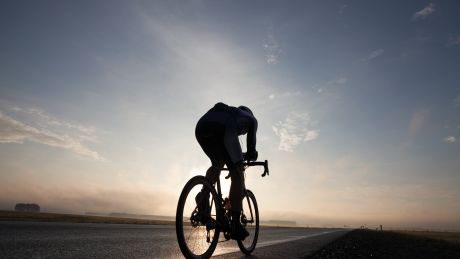
Even if you’re a regular cyclist, the idea of cycling around the world – a trip of around 29,000km – is daunting, to say the least. So… how about doing it in 80 days? Mark Beaumont makes this phenomenal challenge sound almost easy. “If you’ve got the right team working at the right intensity, all the logistics in place and the ability to mentally hack it, yeah, you can do it,” the 34-year-old Scotsman told us during his preparation for attempting it.
With a team of drivers, chefs, logistics co-ordinators and experienced performance manager Laura Penhaul in place, Beaumont was not entertaining the possibility of failure. “It’d be 75 days of riding, five days for flights and a small margin of contingency… We’re absolutely focused on what it takes to do what we believe is possible.” With the end in sight, on day 75, we spoke to Beaumont in Spain about the highs and lows of his circumnavigation challenge.
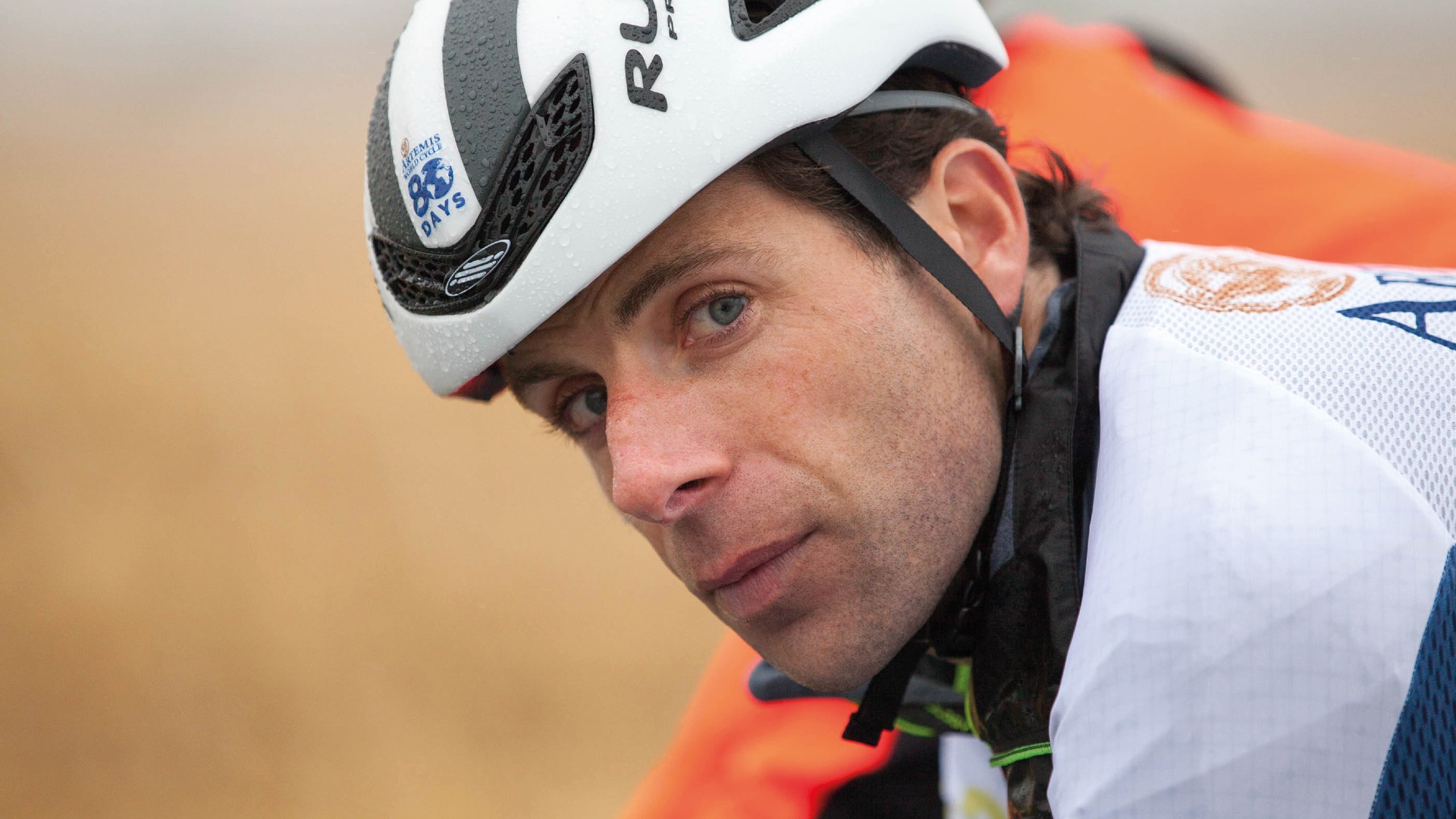
Day one
Was it Jules Verne’s tale of Phileas Fogg going around the world in 80 days that inspired you to take up the challenge on a bike?
The book makes the 80-day record feel like a tantalising, classic plan – a bit like climbing Everest. I knocked 82 days off the circumnavigation record before [in 2007-8, when Beaumont cycled around the world in 194 days] and I have always had my eye on doing something bigger.
I watched how the record came down over the years [New Zealand rider Andrew Nicholson set the record of 123 days in 2015] and it went from being an unsupported record in 2008 to being a supported record. I wondered if I could come back and take it to a whole new level.
How do you break down the 29,000km into manageable chunks?
It’s not good enough to say I’m just going to break the record – I won’t accidentally go sub-80 –so I needed a very clear plan. That meant riding the bike for four four-hour sessions every day, so 16 hours and an average of 240 miles [386km] each day.
The biggest endurance race is Ride Across America and those guys and girls are doing 300 miles a day, so I know what I am doing is not unrealistic – but those guys are sustaining it for ten to 12 days whereas I have to do it for 2½ months.
Get the Coach Newsletter
Sign up for workout ideas, training advice, reviews of the latest gear and more.
Have you stayed on track?
This is day 75 and I am within 100 miles of where I planned to be, so the team and I have managed to pull off the plan perfectly so far. Of course, there are factors I can’t control so some days I have ridden more or less, but the long-term average has been fine. The only thing I can affect is the time I spend on the bike – 16 hours per day. It becomes routine but when you add it all up that is how you get around the world in 80 days.
What is the biggest distance you have completed in a single day?
The biggest day was 280 miles but I did two back-to-back days of 270 miles in America. You have got to have a pretty good tailwind to tap out 270 miles when you are waking up at 3.30am and trying to ride all day.
Conversely, there were four days in the Prairies in North Dakota where I had howling headwinds and over 16 hours I struggled to make 200 miles. It is a very unfair equation. In a headwind I might lose 60 miles but with the same amount of tailwind I could never make up 60 miles and tap out a 300-mile day. That’s why I’ve been obsessed with putting in the 16 hours each day because it is the only thing I can affect.
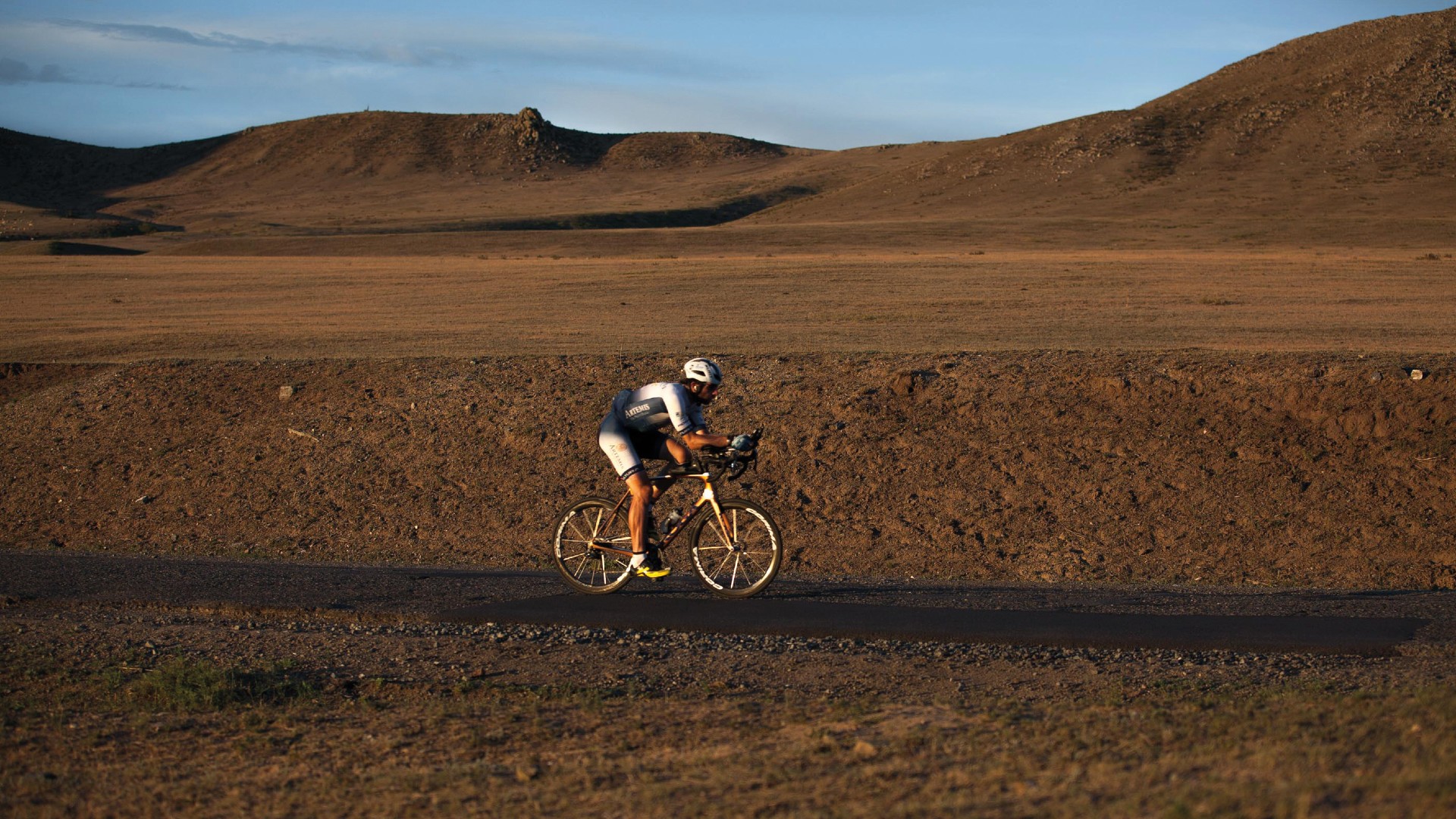
Day 24, riding through the Mongolian desert
How do you deal with the sleep deprivation?
It does strange things to you mentally. You feel cognitively slow. Each day on the bike there are periods when you are alert and periods when you are sleepier and you just have to think your way through it. Obviously I am always concerned with safety on the roads so I am having to monitor that. I have Laura watching me closely to make sure I’m not taking risks.
We’ve seen pictures of you eating crackers and bananas. How have you fuelled your journey?
I have to eat about 9,000 calories a day and that does mean you really see food as fuel. It is not pleasurable. It is a hell of a lot, and I am sometimes eating on my bike. I’ve aimed for lots of natural stuff – you can’t live off bars and gels.
Because I’m sitting in a zone with a low heart rate and low-intensity riding for a huge period of time, I don’t want simple carbs and sugars. I tend to fuel with the slow-burn, fat-heavy foods, plus lots of protein to help rebuild after the riding.
Do you set milestones to achieve along the way? And would reaching each one give you a lift?
Yes, it’s important for me and for my support team to have milestones along the way. I have already achieved the record for the longest distance cycled in a month [11,315km from Paris to Perth in July] and that was a nice lift for me and the team. I could see they were toiling and struggling so that milestone provided huge encouragement. They are all important steps along the way to the bigger prize.
What did you look for when planning the best route?
We are always looking for the route with the best weather because the winds can be a problem. We looked at one route through Kazakhstan and China as we had a request from China to ride there for longer, but we couldn’t do it because the wind was more unpredictable so it would have been slower.
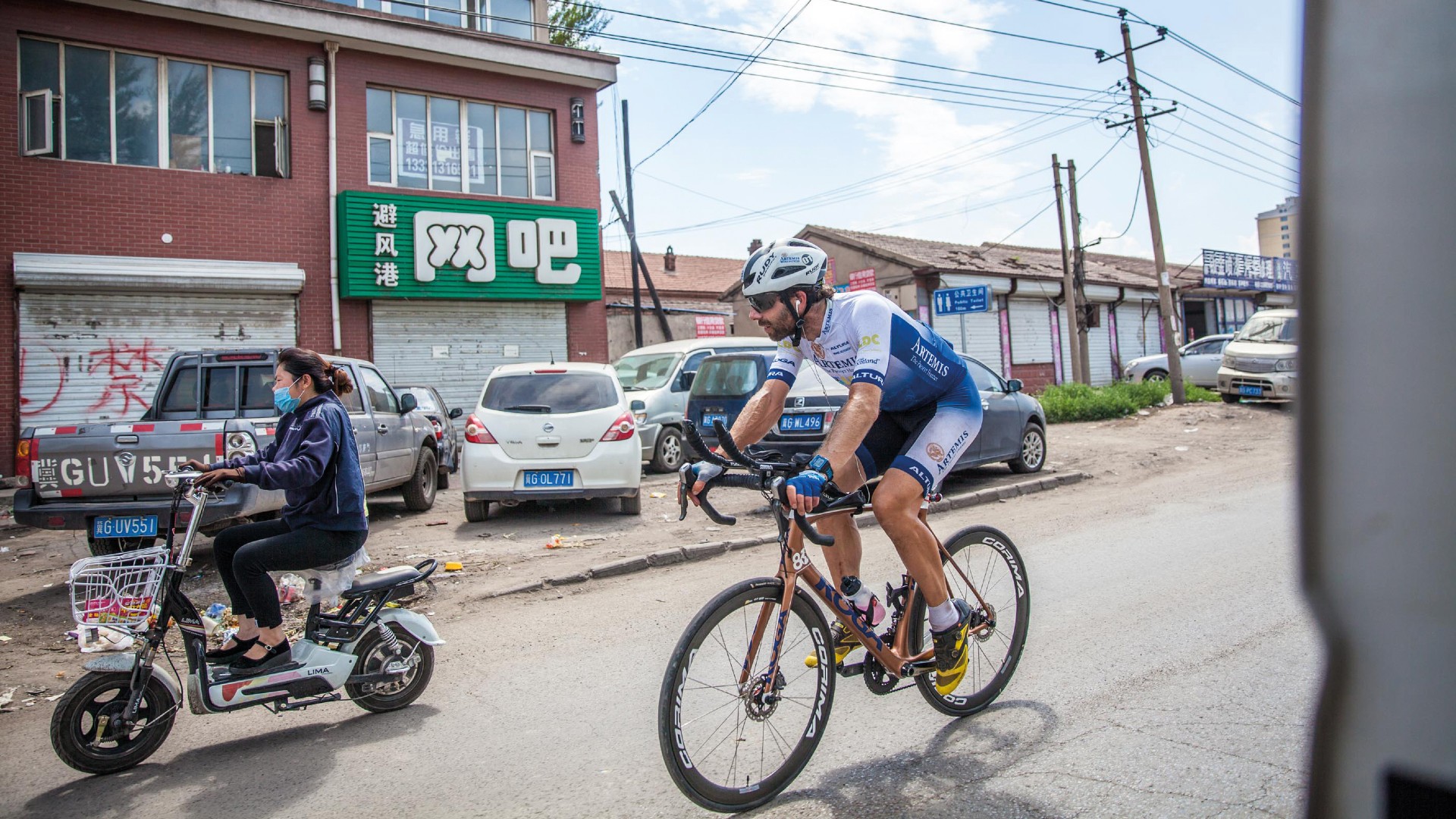
Beaumont in China on day 28 – he was delayed crossing the border from Mongolia, which is closed overnight, but made it to Beijing in time for his flight
What have been the other major logistical challenges?
The main logistical challenge is support. If you see me it looks like it’s just me on my bike but I have 23 bags of kit and lots of logistics to sort out. Simply getting through an airport is a big deal because I try to get off the plane and onto my bike within an hour and there is a hell of a lot to sort out. One of my sponsors is Menzies Aviation and they have managed to do a lot of work to fast-track our departures and arrivals.
How important is it to get the flights right?
Ten years ago when I set the around-the-world record, the transit time between continents wasn’t counted as part of the record. That got abused a bit – people would ride across a continent and then take time out, so when they started again it was like a different ride. So Guinness World Records updated the rule book so you can’t do that any more and now flights are included. It might sound small but if I was able to use the rules of ten years ago I would only have to ride 225 miles a day because we wouldn’t have to consider the flight days. So I have to ride 240 miles a day, which is a significant difference.
You’ve had a few accidents – you chipped your tooth and hurt your elbow in Russia and a car drove into your support vehicle in Australia. Was anything serious enough to make you consider quitting?
I am focused on cycling around the world but I also want us all to get around safely and I don’t want anyone injured or killed. We are pushing it out here and on the road accidents happen, but we were very lucky.
In Australia there was nothing more than a few cuts and broken eggs in the RV. The time I crashed in Russia was at 5.30am when the conditions were wet and dark. I lost control of my bike but luckily it was a smooth road so I skidded and I didn’t do much damage. I picked myself up and carried on.
How important is your support team?
I have got an amazing group of people back in Scotland looking out for me. Laura Penhaul, my performance manager, was a physio to Paralympic track guys and she is also a top-level medic. But having rowed the Pacific, she also has the resilience that comes with big expeditions and she knew what I would be going through.
Leven Brown, one of my team leaders, is one of the UK’s most experienced ocean rowers and has rowed the Atlantic many times. Mike Griffiths is my logistics lead and he has an strong military background. All the others on my team are just incredible.
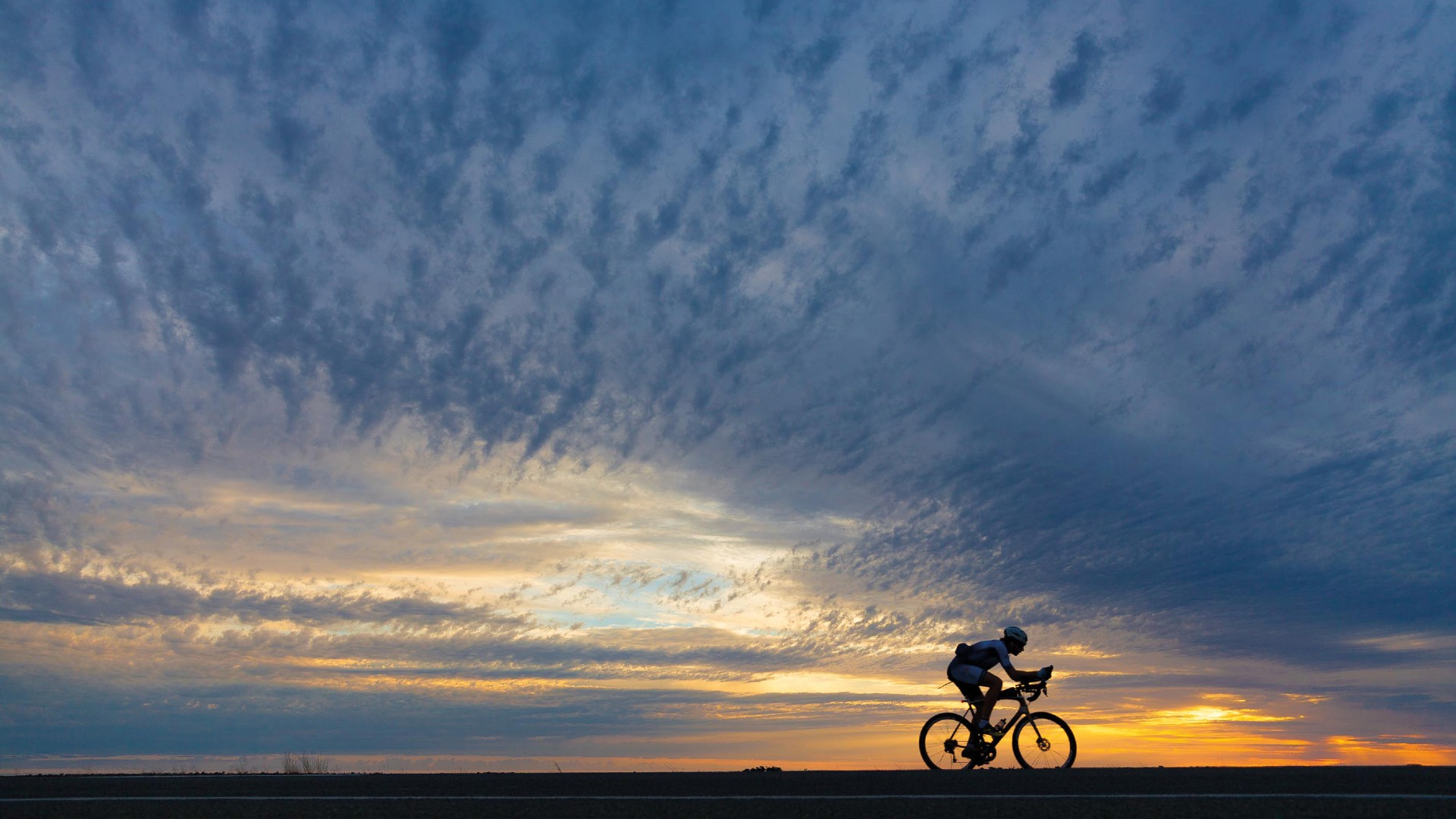
The Newell Highway, which runs from Melbourne to Brisbane, on day 40
Did any part of the world surprise you?
The wonderful thing about covering 240 miles a day is seeing the changing landscape. A favourite of mine was Mongolia. Riding across the Mongolian steppes and the Gobi Desert I saw staggering horizons. I have never seen bigger horizons. That was very much in contrast with Russian which was tough – very industrial. So it was great to get to Mongolia and see these vast expanses and the desert.
RECOMMENDED: Mark Beaumont’s Five Favourite Places To Cycle
Have you had any drama at border crossings so far?
Things have gone OK, which is a massive relief. On leg one from Paris to Beijing we faced some tricky border crossing where I needed serious visas, letters of invitation and fixers, and the crew had one or two issues but luckily all my paperwork was in order. It is always a mighty relief to get across without significant delay. We have also been through parts of the world where the borders are not open 24 hours a day so we had to time our arrival properly. It’s good to be back in the Western world where everything is a bit more familiar.
What have people’s reactions been like?
I love seeing how other people see my ride through their own experience and their own lens. The cycling nuts all start talking about the longest rides they have ever done and try to relate to what I am doing.
It’s interesting to see the different points of reference, because for me this is a very personal journey – I’m sharing it on film and through social media but I still live in a bubble on the road. So when people turn up and ride with me and stand with signs and give me their family cooking, it is amazing and hugely encouraging.
Halfway around the world you encountered a man also riding around the world – on a unicycle....
Ed Pratt is a young unicyclist who got in touch with me before I left. He is riding around the world and he suggested we meet up. It was inevitable that I would pass him. He’s pedalling just a few miles an hour and maxing out at 80 miles per day. But it is just a phenomenal effort and he was a real character.
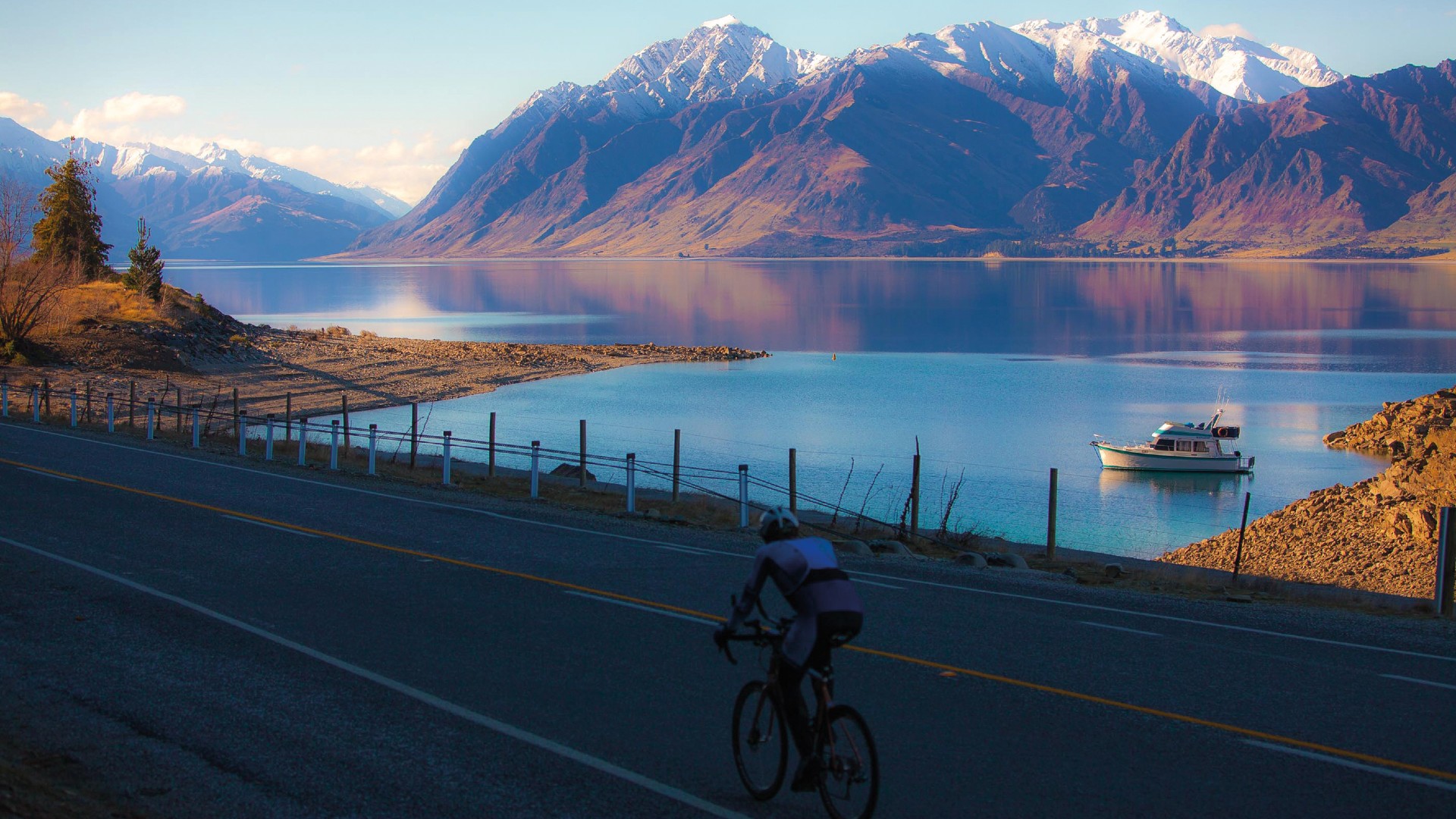
Powering through the Canadian wilderness on day 45
How have you managed to maintain your enthusiasm and positivity despite the pain and fatigue?
This is mainly mental. There are many better cyclists than me; the only reason I can dream up and pull off something like this is the ability to suffer. It is not about technical ability or logistics or fitness. It is about the mental game. How much grit have you got?
How will you celebrate finishing?
It has been a weird time… If people think about everything they have done in the past 2½ months – in that time, I have just been riding my bike. That sums it up. It is hard to imagine life after this, because for me this is not just 80 days on the road. This is the last 2½ years. I’m sure I will want to change gear for a while because this crazy project has taken over my life for 2½ years. I really don’t have much planned after the finish.
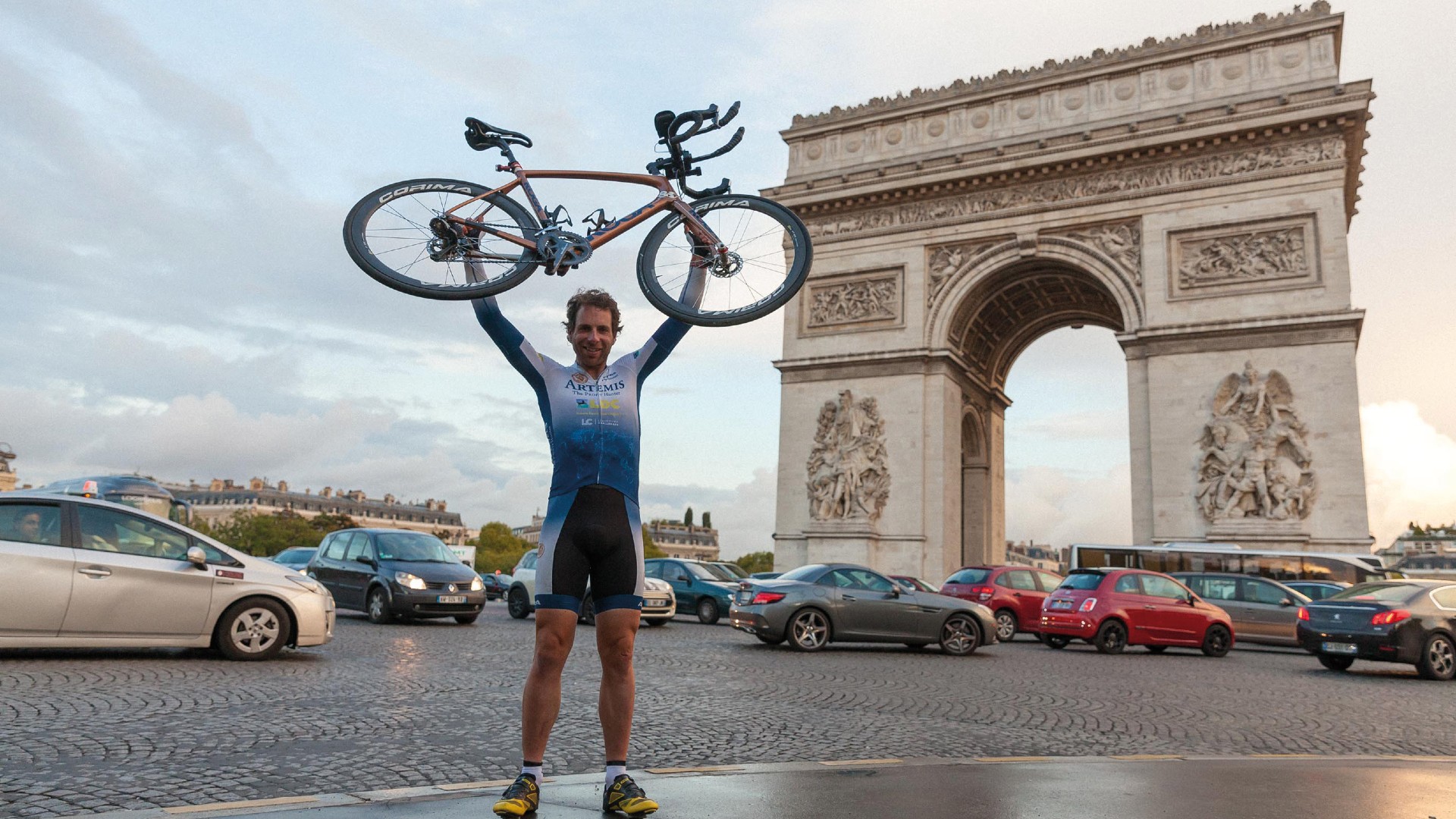
Finishing, appropriately, at the Arc de Triomphe in Paris
On 18th September, 78 days, 14 hours and 40 minutes after he set off from Paris on 2nd July, Beaumont arrived back in the French capital having knocked 44 days off the previous cycle circumnavigation – but, more importantly for him, having fulfilled his ambition of emulating Jules Verne’s fictional Victorian traveller.
“It was an absolutely brutal schedule. Mentally and physically it’s the hardest thing I’ve ever done,” he said on arrival back home in Edinburgh. “It’s going to take me a couple of months physically to train down and readjust.” But once he’s done that, we wouldn’t bet against Beaumont making another equally impressive record attempt before too long.
Mark Bailey is a features writer and interviewer who contributed to Coach magazine in 2015 and Men’s Fitness UK, which predated, and then shared a website with, Coach, until 2019. Mark has also written for national newspapers including The Telegraph and The Financial Times Magazine, as well as magazines and websites such as Cyclist and Bike Radar.
